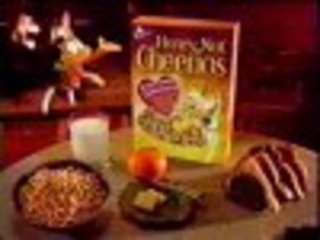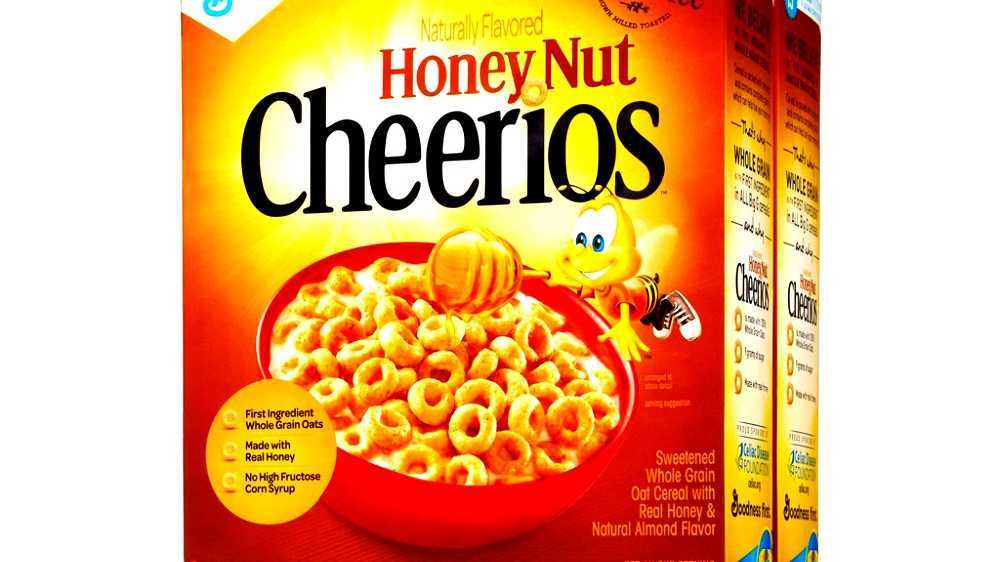
Sounds like a pretty lame band-aid solution to me. They’re going to make it all better by sending consumers packs of wildflower seeds that may or may not ever get planted. See the irony? A cereal that is using GM crops that science shows is having a negative impact on bee populations is now using the slogan “helping is in our nature’. I’m guessing that a heck of a lot of GM sugar and corn starch are used to make Honey Nut Cheerios, given that over 6 million people start their day off by tempting their tummy with a taste of nuts and honey…. While oats and oat bran are not from genetically modified crops, the second and third ingredients are: sugar (from sugar beets) and corn starch (from corn). What does this have to do with Honey Nut Cheerios? Lots!!! Let’s start by taking a look at the ingredients: The lower bee abundance in those GM fields studied may be explained, in part, by the fact that fields of herbicide-tolerant crops often have lower weed and other plant diversity, which in turn reduces food sources for a number of species, including important pollinators. Furthermore, the pollination deficit (the difference between potential and actual pollination) was greatest in the GM fields, while there was no pollination deficit at all in organic fields. When researchers at Simon Fraser University in BC compared GM herbicide-tolerant canola, conventional canola and organic canola fields in Alberta, for instance, they found that wild bee populations were largest in organic systems and least abundant in GM systems. Studies show that some agriculture systems support more biodiversity than others. The only experiment that will reveal true impacts of GMOs is open-air release.įor example, herbicide-tolerant crops have encouraged the use of herbicides that reduce overall plant diversity in agricultural systems, and in doing so, can limit habitat and food sources for other important and beneficial organisms such as bee and butterfly species. It is virtually impossible to predict the impact that GM crops and/or organisms can have on biodiversity by studying this issue in a lab. GM (Genetically Modified) CROPS AND BIODIVERSITY Here are a few excerpts from CBAN’s report “Are GM Crops Better For The Environment?” that the Honey Nut Cheerios campaign fails to address: To me it sounds like a bunch of honey-nut-coated Bee.S, especially since I just recently read three reports published by the Canadian Biotechnology Action Network (CBAN) regarding the impact of genetically modified crops on the environment and our health. By the end of the campaign, 115 million seeds were given away and consumers were encouraged to ‘please keep planting and creating a bee friendly word’. The campaign goal was to give away 35 million wildflower seeds.
HONEY NUT CHEERIO BEE NAME FREE
During this campaign, Cheerios’ mascot, Buzz the Bee went ‘missing in action’ from Honey Nut Cheerios’ packaging, and consumers could request free bags of wildflowers from General Mills (the cereal manufacturer) which they could plant to ‘bring-back-the-bees’. The commercial was part of Honey Nut Cheerios’ Bring Back the Bees campaign. The commercial, by Honey Nut Cheerios, had a very endearing message: “helping is in our nature”. It was a very heart- warming commercial, showing humans saving adorable animals from a variety of life-threatening situations.
HONEY NUT CHEERIO BEE NAME TV
Promotional tie ins included gift certificates in cereal boxes and special Honey Nut Crunch sundaes in stores.While waiting at the Barrhaven train station with my daughter for her train back to Toronto this past Sunday, a commercial came on the TV that was mounted on the wall in the waiting area.

In 1985, Baskin-Robbins introduced a flavor based on the cereal called Honey Nut Crunch.
HONEY NUT CHEERIO BEE NAME DRIVER
Historically, Honey Nut Cheerios has participated in much the same promotional advertising as the original brand, while collaborating with the field of NASCAR and especially driver Bill Lester, in promoting healthy diets. Buzz also appeared as the host in the Honey Nut Cheerios Spelling Bee game, which was named after the breakfast cereal. He is currently voiced by Billy West (of Futurama fame).


Buzz was originally voiced by Arnold Stang until around 1992. The name was later shortened to just Buzz. The bee buzzed around without a name until 2000, when Kristine Tong, a fifth-grade student from Coolidge, Texas, won a national contest to name the bee, dubbing him "BuzzBee". Their mascot is an anthropomorphic bee, designed for the first commercials by Dean Yeagle at Zander's Animation Parlour in NYC.


 0 kommentar(er)
0 kommentar(er)
